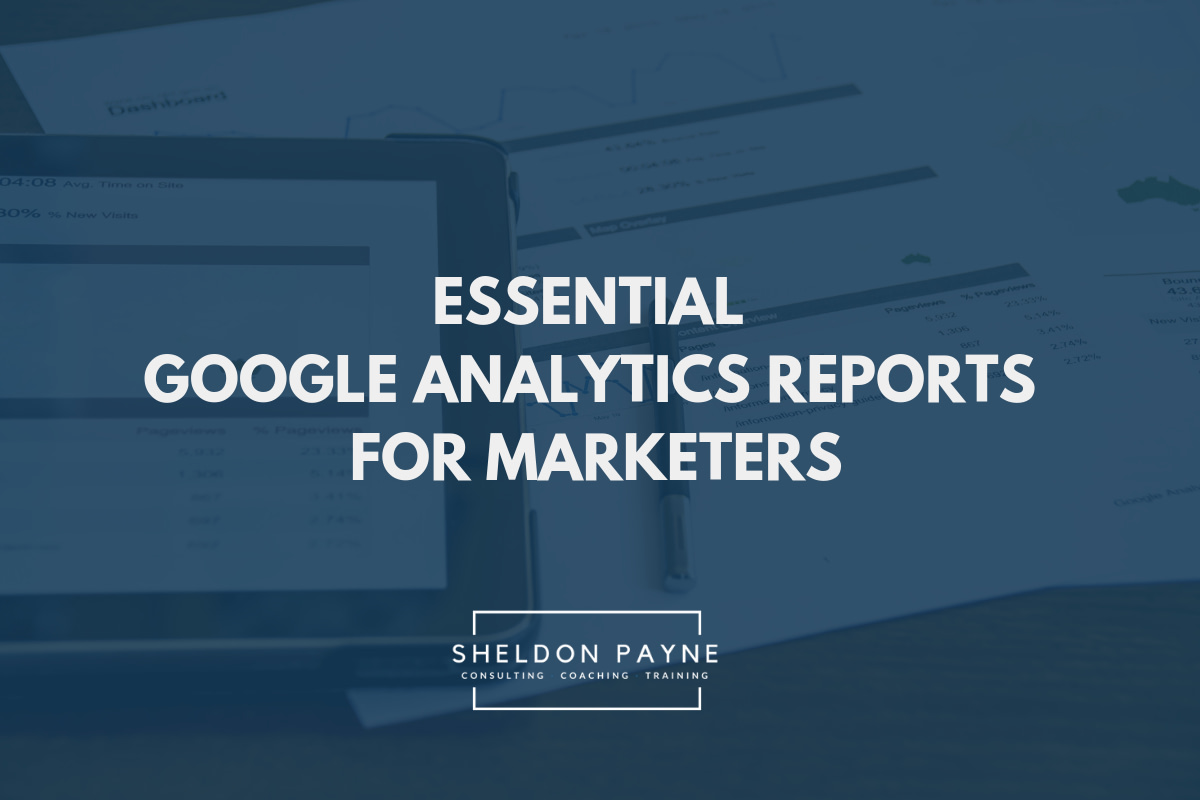Do you have a website or a blog? Chances are pretty good that you do. Have you ever wondered how many visitors stop by to visit to your site? Where they come from? What pages or posts they’re reading while they’re there? Or even worse, what they’re NOT reading? If you answered “YES!” to any of these questions, then this post is for you. Welcome to my Beginner’s Guide to Google Analytics. Don’t worry – I’m going to break this down for you.
Setting Up Your Google Analytics Account
Do you already have a Gmail address? Perfect! You’re off to a great start. A single Google account can be used for any of Google’s services: Gmail, Google+, Google Drive, YouTube etc. If you are already using Gmail then you can simply create your Google Analytics account under the same username. If you don’t use Gmail, or prefer to create a new Google account, then you will need to do so before accessing Google Analytics. Once you are ready go to Google Analytics and sign in with your Google Account.
Setting Up Properties and Views
Google Analytics refers to a blog or website as “a property”. You can have up to 50 properties on your Google Analytics account, meaning that you can add 50 different websites or blogs. We’ll assume that you only have one since this is a Beginner’s Guide. And although Google Analytics is free for most people, they do offer a premium service for professionals. Don’t worry about that. The free option is more than enough for most users.
Note: don’t include the trailing / in your Website URL.
There are a few settings we’ll want you to adjust before moving on.
User and Event Data Retention
The first is the user and event data retention. With the onset of GDPR regulations Google Analytics now gives you some control over how long to keep user data. The default is two years but you can adjust this in the Proper menu under Tracking Info / Data Retention.
Remarketing and Advertising Features
Next we’re going to enable remarketing and advertising reporting features. This will give you information such as age ranges, gender, and interests of your site visitors. You can also find these settings in the Property menu under Tracking Info / Data Collection.
Google Search Console
Next is connecting Google Search Console. This will allow you to see the data that Search Console is collecting all within Analytics and will also allow you to use that data for goals. To connect GSC look for it under the Property menu in All Products.
If you need help getting Google Search Console set up on your site, check out our beginner’s guide.
After setting up your main website property you’ll want to create some views. You’re allowed to have 25 views per property and we recommend setting them all up as placeholders from the get go so that they are populated with data. To create a new view, in the admin section of Analytics click on the blue “+ Create View” button above the View menu.
Bot Filtering
Once you give your view a name and set the reporting time, there are a couple of settings you need to adjust. First up, exclude known bots from being counted in your data by ensuring that this checkbox is checked.
Site Search Tracking
If your website has a search box activated, you will definitely want to enable this setting. This allows Google Analytics to track all the different searches that your visitors perform on your site. If you have a hardware store website, and your visitors are consistently searching for “hammer” in the search box, you might decide that the hammer section of your site is too difficult to locate on it’s own. If you notice a lot of searches for “sliding doors” but your store doesn’t carry this item, you might decide that you’re missing out on a chance to make more sales.
In your view settings, you need to tell Analytics what your site uses to indicate a search term in the url. For WordPress, it’s “s” by default.
Setting Up Basic Filters
Now it’s time to sit back and watch the traffic come in, right? Not quite. We want the most accurate data possible, which means we have to filter out any results that might artificially inflate the results. Ironically one of the worst culprits is our own self, especially early on. It’s only natural that we are on our own site, making changes, updating things, admiring our work. Those extra visits will show as traffic to Google Analytics, but that’s not the traffic that we want to see. To stop our own visits from showing as traffic, we can set up filters. Traffic will still be allowed through, but it will not show up in our filtered view. Excluding an internal IP address is the best way to filter our own visits.
And let’s not forget about bots! These little internet crawlers are essential for the services that use them, but they’re of no use to you as a source of traffic! Google (and others) use these bots to crawl your website pages so they can properly index them in their huge databases. They have one job, and it’s not to sign up for your newsletter. We set up bot filtering in our view already but you can identify (and then exclude) ones that are missed by hostname.
As important as it is to filter out undesirable analytic data, it’s equally important to maintain an unfiltered view of all traffic. Having quick access to the raw data will save you a lot of headaches if you suspect that one of your filters might be a little over-zealous. You can easily move between filtered and unfiltered views and see how the results change, depending on which view you are using.
To add a filter, look for Filters under the View menu. Choose a filter name that’s descriptive. Filters are applied to a single view but available account wide so it’s important to have a name that is clear. An example of a filter to exclude an IP address is below.
Here some Common Google Analytics Filters for Every Website:
Setting Your Goals
Now that you have a property and views configured it’s time to set some goals. Google Analytics is interesting to look at, but it only becomes incredibly useful if you have measurable goals to track! You will want to consider your goals carefully. What are you trying to accomplish with your website or blog? Maybe you have an ebook that you are selling. You would probably want to set your goal to track the confirmation page that a buyer will reach after the checkout purchase stage.
Your website doesn’t need to sell a product or service to take advantage of Google Analytics. Maybe the focus of your site is to convince a reader to sign up for your monthly newsletter, or complete a form to receive more information at a later date. These types of lead generation strategies are perfect for Google Analytics too. When setting your goal, look at the conversion you’re focussing on. The “thank you” page after signing up for a newsletter, or submitting a form, is the perfect place to set your goal. These are pages that you will want to track, so you can take steps to improve the results over time.
To add a goal, look for Goals under the View menu and click on the New Goal button. You can choose from some pre-existing templates or you can create your own. To set up a goal to tracks contact form conversions you’ll want to choose Custom. And example of the description and details for this goal are below.
Look for a future post where we do a deep dive on Goals for your site.
Time to Add the Code To Your Site
Now that we’ve got your Analytics account in tip top shape it’s time to get the tracking code on your site . You can find the code in the Property menu under Tracking Info / Tracking Code. This code must be pasted into your website, and depending on your site’s platform, might be relatively straightforward, or might require you to do a little basic code editing. For example, if your site runs on WordPress, many themes include a tracking ID field that you can then paste your code into. If your theme doesn’t include this field, you can install a Google Analytics plugin and add your code that way. If you prefer a more manual approach, you can always copy the code directly into the header section of your site’s html using a text editor.
If you need help getting Analytics added to your site, send me a message.
In Conclusion
Creating a website is a great first step, but unless you have accurate data you will never know if your website is performing the way you intended it to. Google Analytics provides you with that data. If you’re looking for help getting Google Analytics set up for your website or blog, click our contact info! We are ready to help get you to that next level.
What You Should Do Next:
Sign Up For My Newsletter – Get Weekly Digital Marketing Tips in your inbox. Receive my latest thoughts on what’s happening in the digital marketing space along with some tips and advice on marketing and entrepreneurship.
Find Me on Social Media
Instagram – https://www.instagram.com/sheldon.payne/
YouTube – https://www.youtube.com/user/PaynesBrain
LinkedIn – https://www.linkedin.com/in/sheldonpayne/














